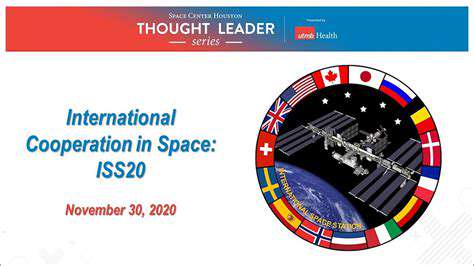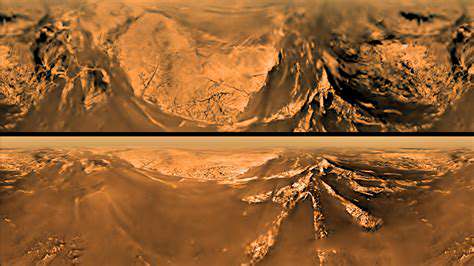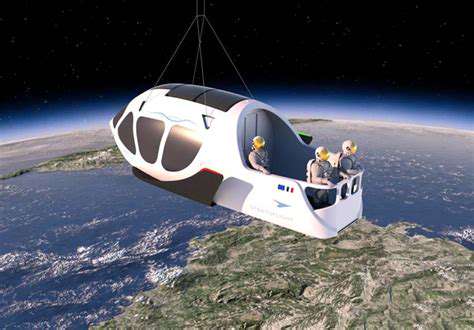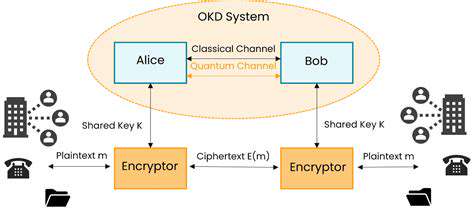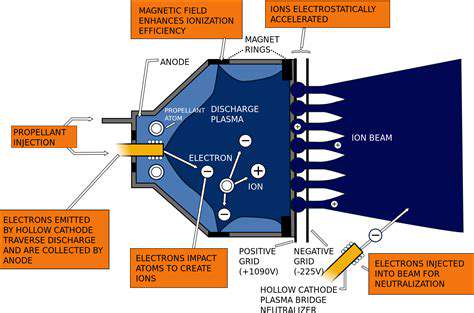
Ion Propulsion: A Deep Dive
Ion propulsion systems utilize electric fields to accelerate ions, typically xenon, to extremely high velocities. This process, while producing relatively low thrust, allows for exceptional specific impulse – a measure of fuel efficiency – making it ideal for long-duration space missions. The low thrust allows for prolonged acceleration, a crucial factor in reaching distant destinations. The technology is inherently more complex than chemical propulsion, demanding precise control over electric and magnetic fields.
A key advantage of ion propulsion is its remarkable fuel efficiency. This translates to significantly reduced propellant requirements for achieving the same velocity changes compared to chemical rockets. This efficiency is particularly important for deep space missions where the mass of the propellant significantly impacts the overall mission design and payload capabilities. By maximizing fuel efficiency, ion propulsion enables more ambitious space exploration endeavors.
Mechanism of Operation
Ion thrusters operate by ionizing a propellant, typically xenon gas, accelerating the resulting ions using electric fields, and then expelling them out of a nozzle. This process generates a sustained, albeit low, thrust. The electric fields are carefully controlled to ensure optimal ion acceleration and minimize energy loss. The resulting thrust, while relatively small, builds over time, allowing for significant velocity changes in long-duration missions.
The entire process hinges on the precise manipulation of electric and magnetic fields. These fields are crucial in ionizing the propellant, accelerating the ions, and directing their expulsion. The precise control of these fields is vital for the efficient and reliable operation of the propulsion system. Precise control ensures minimal energy loss and maximizes the effectiveness of the propulsion system.
Applications and Advantages
Ion propulsion finds applications in various space missions, particularly those requiring extended durations or precise maneuvers. One key advantage is its ability to achieve high specific impulse, making it highly fuel-efficient. This is paramount for missions venturing far into the solar system, where the limitations of onboard propellant storage become critical. Its precision and controlled thrust are beneficial for delicate maneuvers and station-keeping during orbital operations.
The high efficiency of ion propulsion translates to reduced propellant requirements for achieving desired velocity changes. This translates into increased payload capacity and a significant reduction in launch mass, crucial for reducing the overall cost of space missions. These capabilities are especially important for deep space probes and satellites with long operational lifespans.
Challenges and Future Directions
Despite its advantages, ion propulsion faces challenges, such as the complexity of the required hardware and the need for high-voltage power supplies. The technology demands sophisticated control systems and precise manufacturing tolerances. The high cost of developing and maintaining these systems is a significant hurdle. However, ongoing research and development efforts are continually refining the technology, leading to more compact, efficient, and reliable ion propulsion systems.
Future advancements may involve exploring alternative propellants, such as those with higher mass-to-charge ratios. This could potentially increase the thrust and efficiency of the systems. Further refinements in power management systems and onboard control algorithms could lead to even greater autonomy and reliability in space missions.
Nuclear Electric Propulsion (NEP): Unleashing the Power of Atomic Reactions
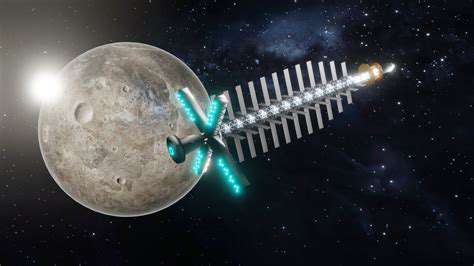
Harnessing Atomic Power for Space Travel
Nuclear electric propulsion (NEP) represents a significant advancement in spacecraft propulsion, offering unparalleled capabilities for deep space exploration. Unlike chemical rockets, which rely on finite onboard propellant, NEP systems utilize nuclear fission to generate electricity, powering ion thrusters. This allows for sustained acceleration and efficient trajectory management over vast distances.
This revolutionary approach promises to drastically reduce journey times to destinations like Mars and beyond. The constant, low-thrust acceleration achieved with NEP dramatically minimizes the time required for these long-duration missions.
The Power Source: Nuclear Fission
The heart of an NEP system is a nuclear fission reactor. This reactor generates heat, which is then used to produce electricity via a thermionic or thermoelectric conversion process. This process is significantly more efficient than other methods of generating electricity in space, allowing for more energy output for a given mass.
The compact nature of these reactors is crucial for space applications, minimizing the overall size and weight of the propulsion system, which is vital for maximizing payload capacity and efficiency.
Ion Thrusters: The Propulsion Mechanism
The generated electricity powers ion thrusters, which accelerate ions to extremely high velocities. This results in a sustained, albeit low, thrust, ideal for long-duration missions where high acceleration is not a priority.
This continuous, low-thrust acceleration is far more efficient than the bursts of thrust provided by chemical rockets, making NEP a more suitable choice for missions demanding extended periods of propulsion.
Advantages of Nuclear Electric Propulsion
The primary advantage of NEP lies in its exceptional fuel efficiency. The use of nuclear fission as a power source eliminates the need for large amounts of chemical propellant, reducing the overall mass of the spacecraft and increasing payload capacity.
NEP also offers the capability for sustained acceleration, reducing mission durations significantly, and allowing for more complex and precise trajectory corrections. This translates to a significant reduction in travel time for deep space missions.
Challenges and Considerations
Despite the numerous benefits, NEP systems present significant engineering challenges. Safety concerns surrounding nuclear reactors in space are paramount, demanding robust shielding and containment systems. Radiation hazards also need to be carefully managed to protect the crew and sensitive equipment.
The development of reliable and safe nuclear reactors for space applications remains a significant hurdle. Furthermore, the cost of developing and implementing these complex systems is also a considerable concern.
Future Applications and Research
The potential applications of NEP extend beyond simply reducing travel times to destinations like Mars and beyond. It could also pave the way for the exploration of interstellar space, enabling missions to distant star systems.
Continued research and development in NEP technology are crucial for unlocking the vast potential of space exploration. Advancements in reactor design, shielding, and propulsion systems will be essential to overcome current challenges and pave the way for future interstellar voyages.
The Future of Spaceflight: Propelling Humanity Beyond Our Solar System
Beyond the Solar System: A New Frontier
The human race has always been driven by the desire to explore and expand. From the first tentative steps on the moon to the robotic probes venturing into the outer reaches of our solar system, we've consistently pushed the boundaries of our understanding and capabilities. Now, the focus is shifting beyond our immediate neighborhood, toward the tantalizing possibilities of interstellar travel. This new frontier represents not just a technological challenge, but a profound step forward in our understanding of our place in the universe.
This journey will demand innovations across multiple disciplines, from propulsion systems capable of reaching unimaginable speeds to life support systems that can sustain human life for decades-long voyages. The sheer scale of the undertaking necessitates a global collaborative effort, bringing together scientists, engineers, and visionaries from around the world to work towards a common goal.
Advanced Propulsion Systems: Breaking Free from Gravity's Grip
Current rocket technology is highly effective for reaching destinations within our solar system, but to truly venture into interstellar space, we need propulsion systems capable of achieving speeds far beyond anything we currently possess. This requires revolutionary advancements, such as ion propulsion, antimatter drives, or even theoretical concepts like warp drives. The development of these technologies will be a critical step in enabling sustained interstellar travel.
Consider the immense energy requirements for interstellar travel. We are talking about journeys measured in light-years, requiring propulsion systems capable of accelerating spacecraft to significant fractions of the speed of light. This necessitates a profound shift in our understanding of physics and energy production, opening up entirely new avenues of research and development.
One area of intense focus is nuclear fusion, which offers the potential for a clean and powerful energy source to fuel these advanced propulsion systems, thus reducing the time and resources needed for interstellar travel.
Life Support Systems: Creating Sustainable Habitats in Space
Sustaining human life for extended periods in the harsh vacuum of space is another significant hurdle. Advanced life support systems will be essential, capable of recycling air, water, and waste, maintaining a stable internal environment for the crew. These systems will need to be highly efficient, robust, and adaptable to the unique challenges of long-duration spaceflights.
The psychological impact on astronauts during such extended voyages is also a critical area of research. Creating a supportive and stimulating environment aboard the spacecraft will be crucial for the mental and physical well-being of the crew. This will involve innovative approaches to crew management, psychological support, and the creation of a sense of community and purpose in the face of isolation and the vastness of space.
The Ethical and Societal Implications: Preparing for the Unknown
As we embark on this grand interstellar journey, we must also consider the ethical and societal implications of such an endeavor. How will we manage the potential for conflict between different spacefaring nations or civilizations? What are the responsibilities involved in exploring and potentially colonizing other planets or systems? These are complex questions that require careful consideration and thoughtful planning.
Furthermore, the potential discovery of alien life forms will necessitate a careful and responsible approach to interstellar contact. We need to develop protocols and guidelines for interacting with life forms from other worlds, ensuring that our exploration does not jeopardize their existence or disrupt the delicate balance of their ecosystems. These considerations are crucial to ensuring that our interstellar journeys are conducted ethically and responsibly.
